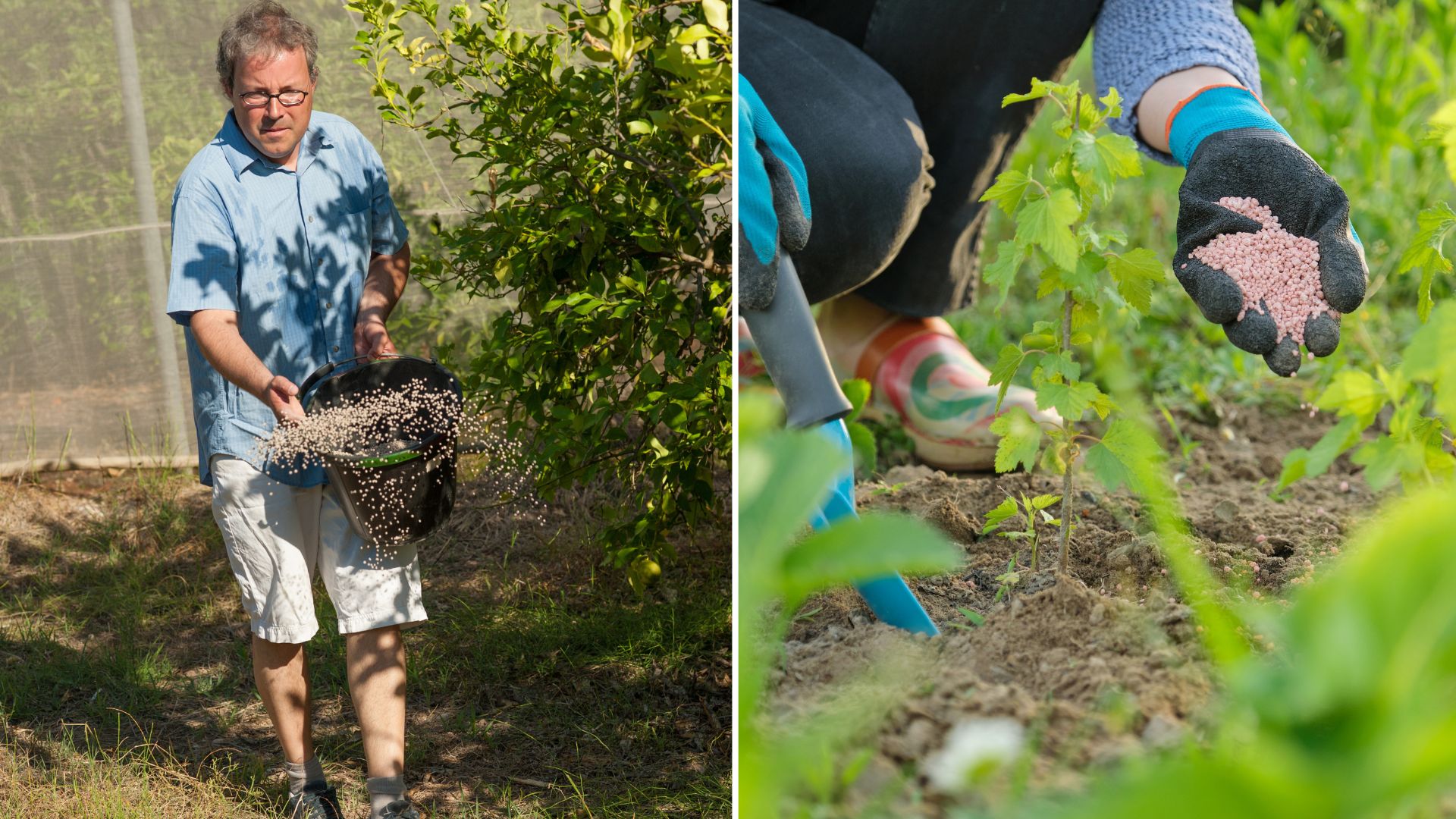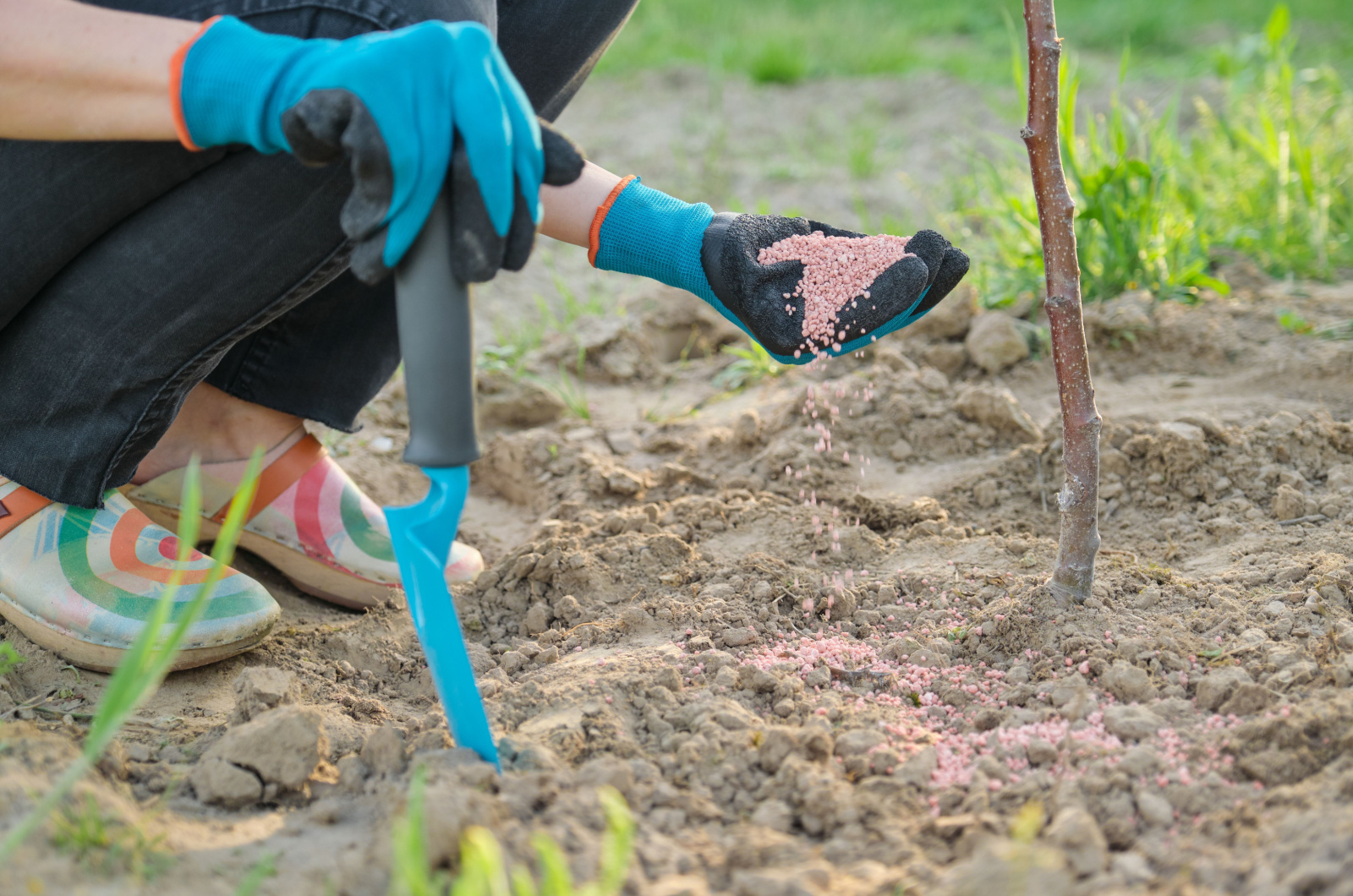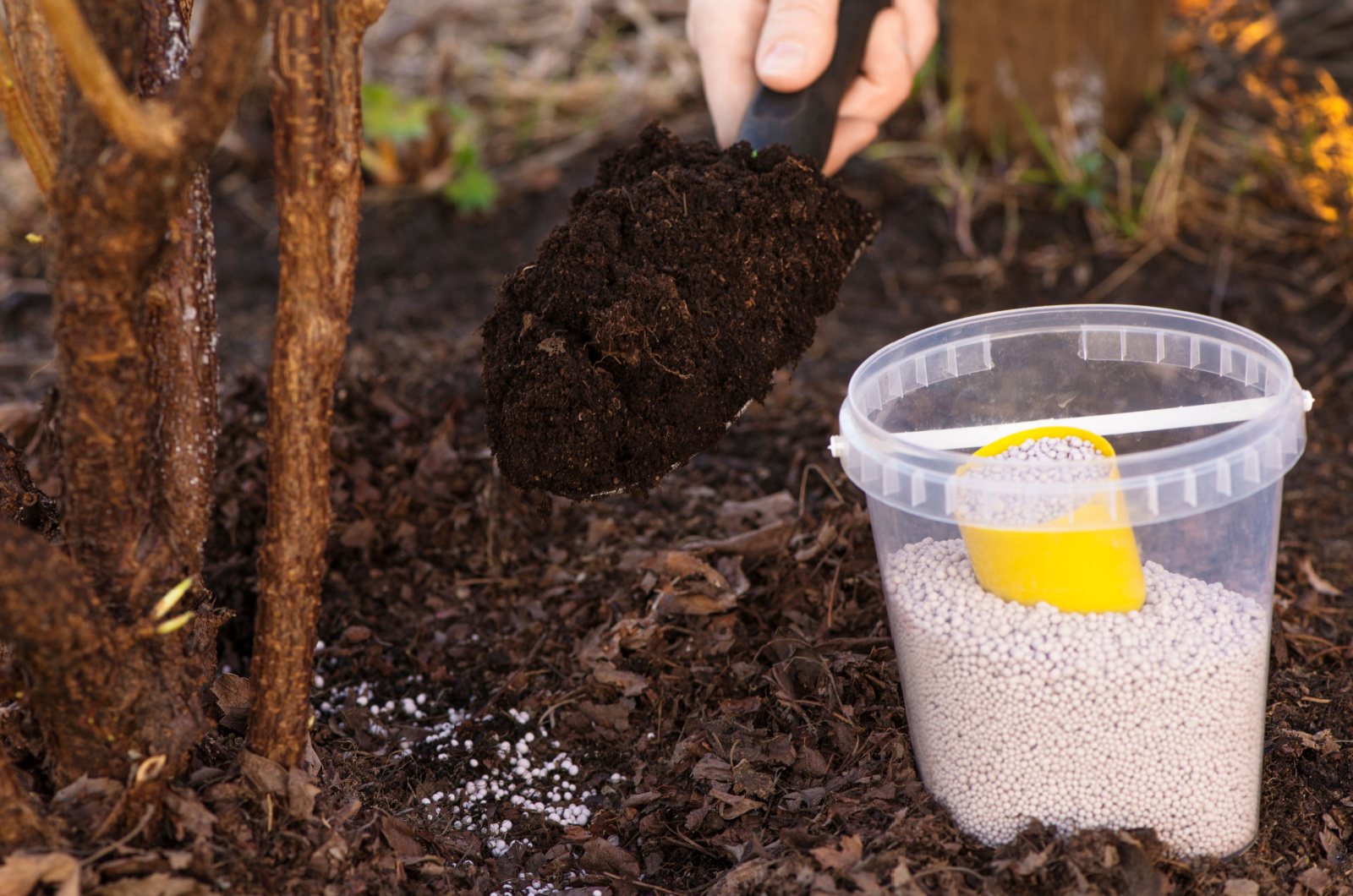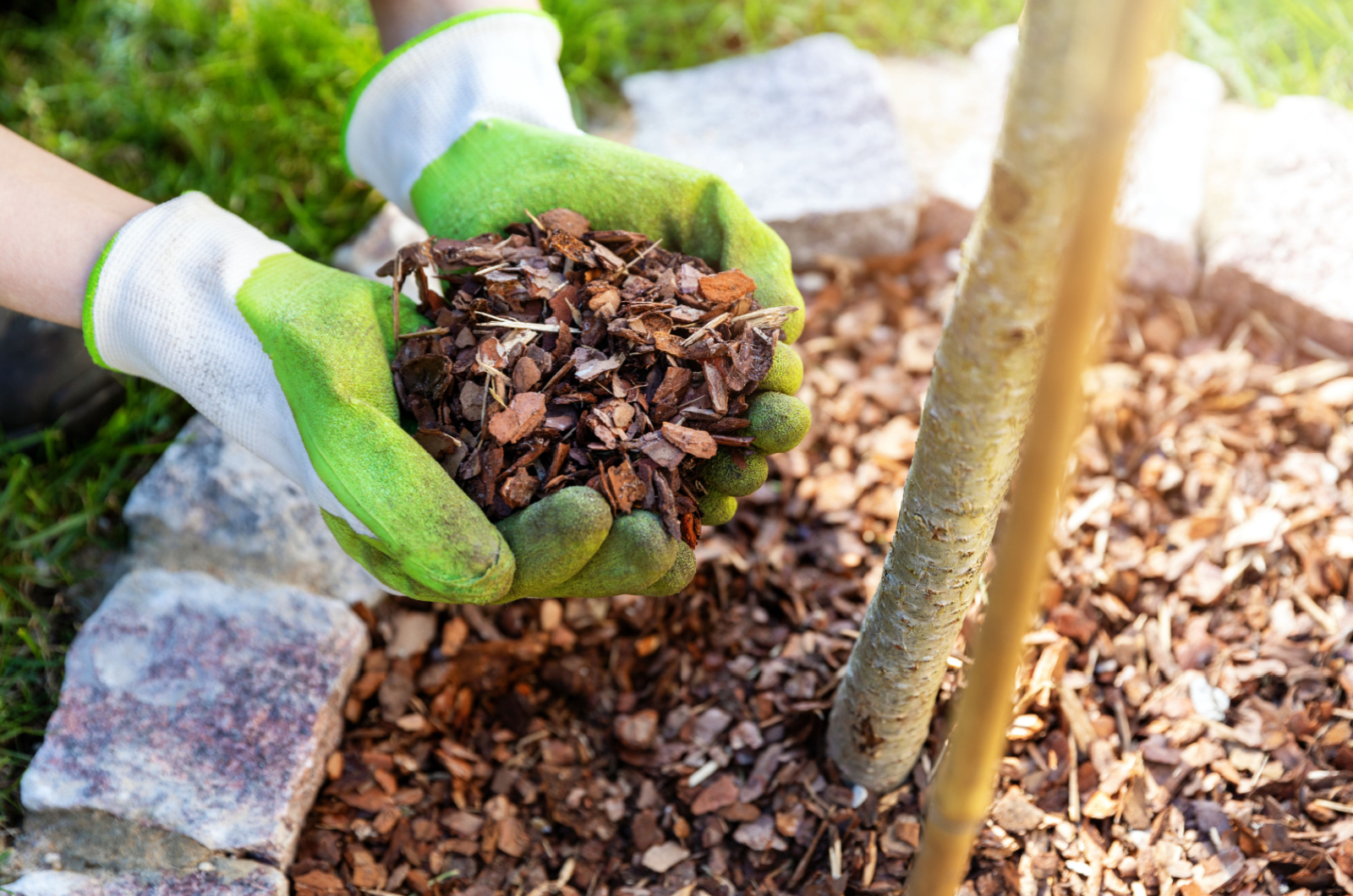Growing your own fruit trees is bound to give you healthy and delicious snacks throughout the growing season.
And to get as much fruit as possible, you should fertilize them from time to time to ensure a high yield.
Whether you have an orchard, a couple of potted fruit trees, or just a tree or two in your backyard, it is important to know how to feed them properly for an abundant harvest.
The key is to fertilize them at the right time with the right product and use mulches.
Here’s how you should do it!
The Best Time To Fertilize Fruit Trees
The best time to feed your established fruiting trees is towards the end of winter or the beginning of spring. This is the period when they need most nutrients to support their growth, keep them healthy, and ensure they produce plenty of flowers.
Fertilize your fruit trees once the buds appear, but before the blossoms begin to open – usually 6 weeks before the tree is in full bloom.
You can continue fertilizing your trees throughout the spring and the beginning of summer, although you should cut back on fertilizer come July.
And don’t forget about young trees (under 3 years old); they also need extra food in spring. Just make sure you don’t go overboard or it would be detrimental.
For instance, if you’ve used store-bought potting mixes or some other amendments, you don’t have to feed them at this point. Ready-made soils usually contain added plant food, which is more than enough to sustain your tree’s growth at this stage.
Mulching can also help your trees get the nutrients they need, and it’s a good practice for both established and newly planted ones. Add a layer of mulch in spring or fall to suppress weeds and keep the soil moist for longer.
Pro tip: If you’ve accidentally added too much fertilizer, water the base of the plant deeply and for a long time so that it can leach deeper into the soil and cause less damage to your plant.
Should You Feed Them In Fall?
It isn’t the best practice to feed your fruit trees in fall or even winter. That’s the time they enter dormancy, which helps them overwinter harsh conditions, and adding extra food would mess with this process.
Additionally, fall feeding can cause a growth spurt, causing your tree to produce tender shoots which are extremely vulnerable and will get damaged or even killed in frost.
You should also avoid fertilizing your trees (and other plants) during heatwaves and dry spells. Feeding trees causes them to draw water from the roots in order to process the fertilizer and expend their energy, which stresses them even more and adds insult to injury. (1)
But there is one thing you can do in fall if you didn’t do it earlier in the season: mulching. This extra layer will regulate the soil temperature and keep the roots safe from freezing. It will retain some moisture and add some nutrients as it begins decomposing.
Discover The Best Fertilizer For Fruit Trees
It’s always best to use fertilizers specifically made for fruit trees.
If you’re worried that it might be too much for your young trees, you can always add half of the suggested amount and increase it over time.
Start feeding them in late winter or early spring and use a fertilizer specifically made for your type of tree. For instance, apples and citruses have slightly different needs, so make sure to give them exactly what they need.
Additionally, all fruit trees need plenty of potassium to form buds and flowers, but stone fruits, pears, and apples also benefit from an additional nitrogen boost.
And yet, if your established fruit tree doesn’t produce plenty of flowers, try giving it a bit more potassium.
However, it is always best to test the soil before feeding your plants because they might not need extra nutrients every year. You can use a home kit to do this just to give you a general idea in which direction you should go.
Feeding The Fruit Trees
Once you discover whether your tree needs any additional nutrients and you’ve found the right product, it is time to apply it.
Most tree fertilizers come in slow-release granules that you just have to sprinkle around the base of your plant, or rather around the rooting area.
And if you have indoor fruit trees, you can feed them with slow-release granules, spikes, or even use liquid fertilizer for faster nutrient release.
Pro tip: If your tree is growing in the grass, remove it before applying fertilizer.
The Best Mulch For Fruiting Trees
Mulching is a great way to help your trees in more ways than one. It can reduce water evaporation, making the soil moist for longer and reducing the need for frequent irrigation. It can also suppress weeds, which won’t steal nutrients and moisture from the trees that actually need it.
Additionally, it will regulate the soil temperature and keep the roots warm and cool enough, keeping them safe from harsh conditions.
Finally, if you use organic mulch, such as compost, leaf mold, and aged manure, they will break down over time and leach nutrients into the soil, reducing the need for fertilization.
Some of the best types of mulches include wood chips and pine needles that will insulate the soil and give your tree everything it needs. Just steer away from heavy rocks because they can damage the roots and even trap heat in.
Don’t add too much mulch because it can lead to root rot – 2-3 inches is more than enough. And never apply it close to the trunk because that can cause rotting, too.
Some suggest using cedar or cypress mulch because they repel termites, but that’s not actually true. These materials wouldn’t be the termites’ first choice, but they will eat it once they exhaust other food sources.
However, cedar and hardwood mulches in particular are great options because they take longer to break down, so you won’t have to replace them that frequently.
In conclusion, if you’re planning on planting any type of tree in your backyard, remember to feed them from time to time or at least mulch them. This will keep them healthy, thriving, and yield you an unforgettable harvest.
References:
1. Tree Care During a Drought (2017). UF IFAS: Gardening Solutions.




